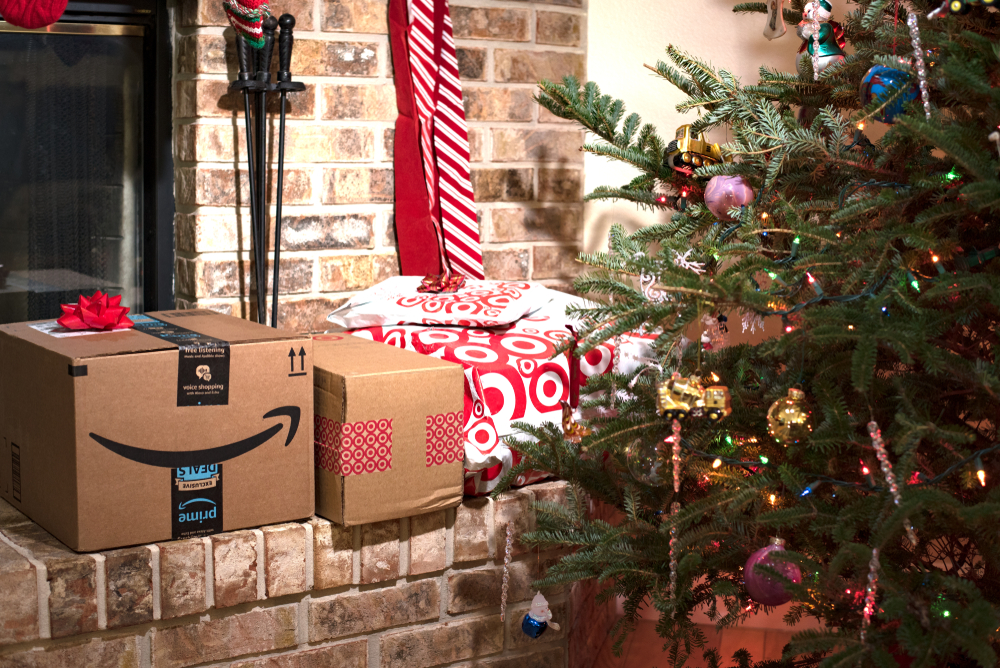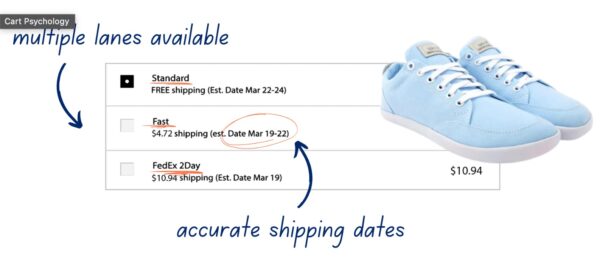Shipping for e-commerce and subscription companies plays a key role during the holidays.
Customers make big purchases for themselves and others, so receiving orders on time is critical. With recent events related to the pandemic and supply chain delays, subscription box businesses must be as prepared as ever if they want to succeed during Q4 2022, because shipping matters, and customers are paying attention.

In this article, I’ll cover some holiday shipping best practices, including a few tips you can implement to improve customer satisfaction while increasing conversions and covering more of your shipping costs.
Sounds too good to be true? Guess you better read on to find out what I mean.
I’ve worked in the logistics and e-commerce space for several years, but with the constantly changing needs of e-commerce brands, I turned to my good friend Brian Wood at BUKU Ship for help with these tips. He’s a real pro, and BUKU’s software does a lot of what I recommend here.
Manage Customer Expectations Around Holiday Shipping Timelines
Customers have different expectations around when they need the order. For example, some people need the product to arrive by a certain date. Think birthday or holiday presents. Others don’t have a set deadline. Are you communicating your timeline effectively to both audiences?

Although nearly half of consumers have already begun holiday shopping, you’ll continue to get sales from people who need your products faster and faster as the holidays approach.
You can start managing expectations by using tools like countdown timers on your site so customers know how many days are left for shipping. You can combine this with banners around cut-off dates – “Order by X day to receive by December 24th,” for example.
You can also include messaging near the “Checkout” button or as part of the checkout process to let customers know when to expect their package. “This time of year, orders take 7-10 days for delivery because of so much shipping volume. Please plan accordingly.”
Managing expectations will help you foster trust and customer loyalty, which could lead to more sales.
Add Cart Psychology to Your Holiday Shipping
Gone are the days of free shipping with one option.

Around the holidays, people care more about knowing when their order will arrive. BUKU has seen this with companies like We’re Not Really Strangers which push a higher volume of their popular card game through expedited shipping lanes during peak season. The company’s Domestic Expedited shipping increased 28.1% from September to October, 2022. Their international options increased even more so, with customers choosing International Expedited 44% and International Express 50% more.
An even stronger example is from Five the Label. When implementing this approach, the company actually experienced a decrease in customers choosing “free shipping” by 20%, while international orders increased 20%, and their expedited and express options increased 31%. All from September to October this year.
This means that customers will choose more expensive options when it meets their delivery deadline! To meet these expectations, you need at least two options, but three is preferable.
This is how that looks for the customer:
There are a few key components at play here.
- Customers see a few options with delivery dates and pricing, which empowers them to pick the option that works best for them.
- Having faster options cost money gives implied value for free and slower shipping. It also allows the brand to increase their margin by fully covering shipping cost on all customers selecting expedited lanes.
- BUKU’s backend software selects the cheapest option and displays that rate along with the expected delivery date.

Implementing multiple delivery options in your checkout flow results in higher conversions. It’s something you should be offering and testing on your site.
As the holidays get closer, you can add margin to the expedited options because customers really want to get something on time. This can offset your other shipping costs while fulfilling your customers’ needs.
If you own a subscription business, this is especially true on the first order. Give customers the flexibility to get it faster while knowing that later orders will come via a slower method.
Operational Considerations for Holiday Shipping
Your holiday sales will not be going up by the quality of your website alone. You must make a conscious effort to prioritize efficiency and proactivity with your business.
First, when is your product coming in? If you already have everything on hand, no worries. But if any products are in transit, get a good idea of when they will land and the turnaround time, so you can build that into customer expectations for those products.

Second, if you’re working with a third-party logistics company (3PL), communicate with them about extra fulfillment days and their service level for November and December. Do they normally fulfill on the same day? Next day? What happens when things get busy? If they are two or three days behind, you need to add that to your cut-off dates and communications mentioned above.
Finally, add in other carriers to the mix. There is zero warning when FedEx, UPS, DHL, or USPS is getting backlogged in your area. During the pandemic, FedEx and UPS started capping pickups from their customers. You can never be too prepared.
You need a second and third option ready if things go sideways. Adding DHL or a ground option to USPS is great, or including some of the priority options can go a long way if delivery dates start getting missed.
Why You Need to Implement Holiday Shipping Best Practices
Don’t let a poor shipping experience cause your churn rate to increase. Give customers and holiday shoppers the product they’re excited about when they expect it!
Do this by managing expectations appropriately with solid messaging throughout the website, giving multiple shipping options with expected delivery dates in the shopping cart, and ensuring you are on the same page with your fulfillment options.
Once you’ve implemented all the holiday shipping best practices mentioned above, look for other ways to maximize your Q4 revenue by investing in customer service and striving to deliver the best possible user experience to every person who is counting on you to brighten up their holiday season!


